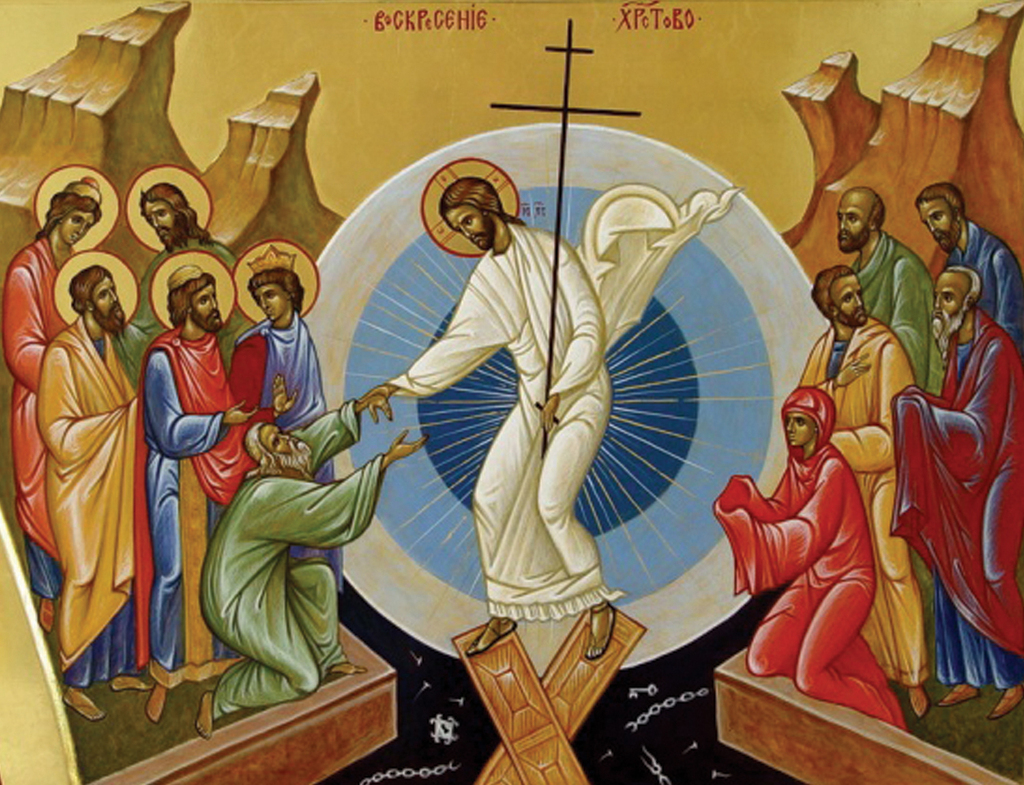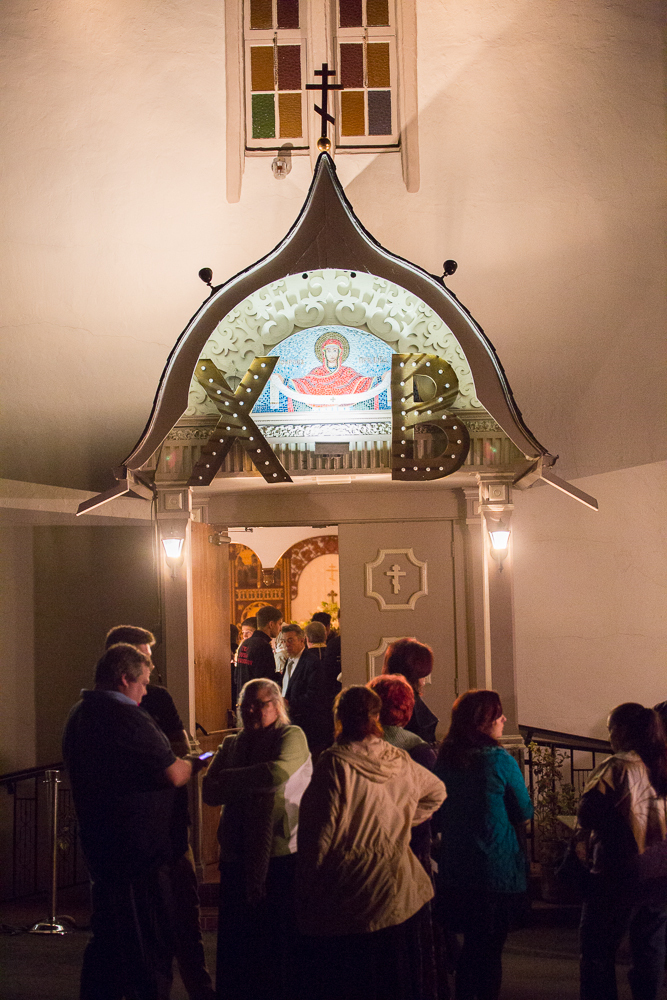|
Trampling Down Death By DeathPriest Christopher Neill
When an icon painter, or rather writer, makes an icon he follows Church Tradition. The icon is a vehicle for truth. In Tradition there can be no depiction of something which has not been seen or recorded. Any attempt to show something that never happened would be a fiction.
Source: Ancient Faith Radio |
Paschal Address of His Eminence Archbishop Kyrill
Reverend Fathers, Venerable Monastics, and Pious Faithful of the Western American Diocese:
Christ is Risen! Truly, He is risen! Once more we revel in the joy of the Feast of Feasts, as the empty tomb proclaims new life to the whole world. Our faith, though at times frail and tender, has brought us nevertheless to these bright days; and whether like the Holy Apostles we had fled Christ’s side or like the holy Myrrhbearing Women we had remained faithfully at His feet through these long lenten days, our Lord has brought us to His Resurrection together... Pascha? Easter?
Recently, while working on the Paschal theme for our website, I found myself wondering - what word is it proper to use on the Orthodox website: Pascha or Easter? Easter have just passed, I thought, meaning the Feast that our Roman Catholic brethren celebrate. But our Orthodox Pascha is just coming this weekend. Hmmm, the two words seem to have different meaning... For me, a native Russian, there have always been only one word - 'Пасха'. And translated to Russian the word Easter is more 'католическая Пасха' or 'catholic Pascha' than 'Пасха'. But still it is Pascha. Well, at least for me.
So, should I use Pascha or Easter on the website? Surely I went to Google and dug the Web for an answer. Below are couple of links that explain the subject. Since I do not have an English major degree nor am I versed in the Christian history of England, I have no way to judge what opinion is right and what is not. Thus I urge you to read those articles yourself and make your own decision. But I like the second, the one that comes from the Catherine's Pascha website. Basicaly it says that both words are proper and have the same meaning although the word Pascha is closer to the Greek source. And both can be used interchangeably.
How Easter Got Its Name - Catherine's Pascha
Ah, yes, and one more thing! Whether you have always called this Day as Easter or you believe that only Pascha word is proper, on this Holy Day give each other a hug and greet each other with love:
Christ is risen! Truly, He is risen!
Webmaster
“Lent after Lent” and “Life after Pascha”
If I am not mistaken, a real temptation that exists once Great Lent is over is to return to “life as usual,” as if Great Lent is at best a pious interlude during which we act more “religiously” and at worst a period of specific rules that are meant to be more-or-less mechanically observed out of a sense of obligation. This undermines the whole reality of repentance at its core, and drives us back into the dubious practice of the religious compartmentalization of our lives. Great Lent is over – now what? |
|
















 Русский Вариант
Русский Вариант



